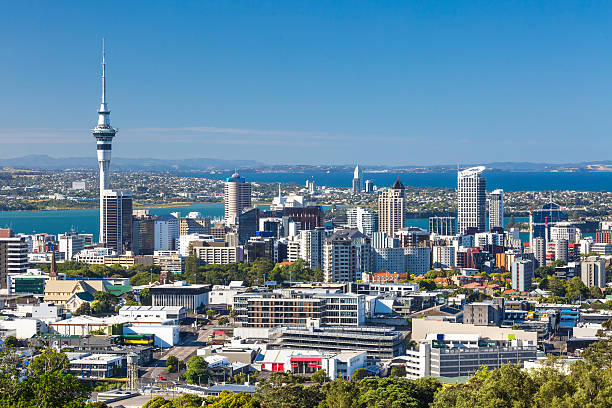Japan Travel Guide: All you need to know to visit Japan in 2025
Welcome to Japan
Welcome to Japan
A magnificent blend of diversity, modernism, quaintness from the past, and attraction to the Orient can be found in Japan. The vibrant hues and busy streets of Tokyo, the numerous UNESCO World Heritage Sites, and the unique cuisine of Japan all promise to provide visitors with magnificent sights and exciting experiences. Perhaps the stunning temples, castles, or “onsen” hot springs can persuade you if that hasn’t done so before. In this thorough guide to traveling in Japan, we’ll go over everything you need to know and see so you can enjoy everything the nation offers.
Document Checklist for Japan
Health declaration
Passport-size picture
Certificate of Eligibility (when applicable)
Visa application form
Your passport
Proof of financial solvency
Flight itinerary
Daily itinerary
Proof of accommodation
Letter of invitation
Proof of travel purpose
Essential Japan Travel Information
Currency – The Japanese yen. $1 is equivalent to 146.82.
Daily budget for one person – Approximately USD 90 to USD 150 per day for a moderately priced tour
Languages – Japanese is the official language. Less than 30% of Japanese people are English speakers.
Socket type – 50/60Hz, Types A and B, 100V supply voltage
Time zone – Greenwich Mean Time (GMT) is +09:00 in Japan Standard Time (JST).
Top 3 cities to visit – Kyoto, Osaka, and Tokyo
Top 3 landmarks/monuments – The Tokyo Imperial Palace, Mount Fuji, and the Hiroshima Peace Memorial Park.
Visa Information for Japan
Now, several different sorts of visas are available to foreign citizens wanting to visit Japan. However, according to Japanese foreign affairs legislation, most foreign nationals must have the proper visa to visit the country.
If you are from Canada, you may apply for a Japan e-Visa online or obtain these visas via the Japanese embassy closest to you.
Typical Costs and Budget for Japan
Daily spending per person – $115
Meals – $25
Transport – $30 (based on whether or not you’ll be moving between cities)
Hotel – For one person, a hotel or hostel costs $50. A typical accommodation for two people is $95
Activities – $10
Most individuals spend an average of $800 per person for one week of their holiday, which translates to $1600 for two weeks in Japan.
Transport and Ways to Travel Around Japan
Although it might be pricey, Japan is renowned for its dependable and secure public transportation system. Therefore, foreign visitors are strongly advised to apply for the Japan Rail Pass, often called the “JR Pass.” The JR pass makes it considerably cheaper to utilize the many transportation options the Japan Rail Group provides, including the Shinkansen or “bullet train,” ordinary trains, buses, and ferries. If you choose not to utilize the Japan Rail Pass, you may still use the IC card to travel on all trains, subways, and buses in major Japanese cities.
A cab is another choice for transportation besides the train and bus. They are substantially more expensive than public transportation but are less popular. Finally, domestic flights will keep the purse for individuals who want to travel throughout Japan’s islands.
Safety in Japan
Robberies are exceedingly uncommon in Japan, which is regarded as one of the safest countries on earth. However, pickpockets in well-known tourist destinations or at bars and nightclubs are only one example of petty theft that has occasionally occurred. Therefore, Japanese officials have provided the following advice to assist you in staying safe while traveling:
- Contact issuers immediately to set up replacements if your credit cards, plane tickets, or passport are stolen.
- Keep the embassy’s phone number in situations like medical evacuation or natural calamities.
- Anti-fraud measures should be adopted.
- To avoid illicit substances and drink-spiking, be vigilant and take care when enjoying the nightlife.
- Locate the closest kban (the little local police boxes that may be found across Japan) if you want assistance.
Weather in Japan
The best times to travel to Japan are in the spring (from March to April) and fall (from October to November), when the days are sunny and dry. The country is also known for its spring cherry blossom (sakura) season and its breathtaking “Koyo,” or fall leaf viewing, in the autumn.
Except for Hokkaido, the summers in Japan may be oppressively hot and muggy, and there is also a lot of rain in June and July. However, while the water level is high and the weather is mild in the south, summer is a fantastic time to enjoy the beaches. Similarly, skiers and snowboarders will like Japan’s mountainous regions in the winter due to the deep snow on the summits.
Popular Cities and Towns in Japan
While Tokyo currently serves as the country’s capital, Kyoto was previously the place to be. The city is still regarded as one of Japan’s most traditional. As a result, Kyoto is the ideal destination for anybody seeking a classic and culturally significant experience, with its conventional Japanese dark wood buildings, numerous Buddhist temples, and Shinto shrines. The Golden Pavilion, Arashiyama’s Bamboo Forest, and the Fushimi Inari-Taisha Shrine must all be seen while you are in Kyoto.
Tokyo: The vibrant environment, outstanding museums, and shopping opportunities in Japan’s capital draw millions of travelers annually. Everyone is encouraged to visit the Tokyo Tower, Golden Gai, Shibuya Crossing, and museums such as the NHL Museum of Broadcasting, Mori Art Museum, and Japan Olympic Museum.
One of Japan’s most well-known cities, Hiroshima, made history in 1945 when an atomic bomb detonated by US forces obliterated the city. Peace Memorial Park is only one of the several memorial sites in the town where visitors may pay their condolences to the tragedy’s victims.
Osaka: Osaka, another sizable city in Japan, is a port city with a distinct personality. Although it is a bustling commercial area during the day, it is renowned for its outstanding street food and nightlife at night. This does not imply that it lacks any attractions; on the contrary, just the opposite is true. Osaka Castle and Sumiyoshi Taisha, one of Japan’s oldest Shinto shrines, should both be visited by tourists.
Must Do and See in Japan
Visit a Kabuki theater: All-male actors in elaborate makeup execute drama, dance, and song in this age-old genre of traditional Japanese theater from the Edo era. The Kabukiza Theatre in Ginza, Tokyo, is the ideal location to watch a Kabuki performance and has English subtitles. The majority of big cities do, however, have concerts.
Take a bath in an onsen: A scorching hot onsen (hot spring bath), which may be found inside or outdoors, is one of the most traditional and enduring experiences you can have in Japan. However, there are various possibilities, from basic to abundant, and while most are often common areas, at certain ryokans, you may arrange a private bath.
Take a culinary lesson: Japan is the top travel destination for foodies. Learning to prepare them is the best way to experience its culinary treasures. You may take a wide range of culinary lessons to learn how to prepare everything from sushi and ramen to tempura and local foods like okonomiyaki from Osaka.
Typical Japanese Food to Try
Sushi: Everyone should sample the authentic sushi varieties, among the most well-known Japanese dishes. Sushi is available everywhere, from convenience stores to fine dining establishments, and eating it in Japan is a unique experience from eating it everywhere else in the globe. If you want to pamper yourself, visit Sukiyabashi Jiro in Tokyo for some sushi.
Nagashi somen: A meal that is distinctive to Japan is nagashi somen. Noodles are thrown into bamboo pipes filled with spring water from above. Customers seated near the bamboo pipes can use their chopsticks to catch the noodles as they flow past them in the water. Then, before eating, they dip the noodles they’ve hooked into a bowl of ice-cold tsuketsuyu. We suggest eating the meal at Chiho no Ie, close to the well-known Takachiho Gorge and said to be the establishment that invented it. Nagashi somen, on the other hand, may be found all around Japan.
Bento boxes: Another cuisine item you must try in Japan is bento boxes. These Japanese lunch boxes contain various tiny foods that provide a filling and well-balanced meal. They are everywhere in Japan, even in convenience and department stores. However, many people suggest the ones you can get at railway stations (where they are known as ekiben and are made with regional ingredients).
Vaccine Information for Japan
The CDC advises all visitors to Japan to consult their doctor at least a month before their trip to determine if shots and medications are necessary. In addition, before every international trip, you should have your usual vaccinations current. Some vaccinations you might require visiting Japan include polio, chickenpox, diphtheria-tetanus-pertussis, flu, hepatitis A and B, measles-mumps-rubella, tick-borne encephalitis, Shingles, Japanese encephalitis, COVID-19, and rabies.
Fun Facts about Japan
Five million vending machines can be found throughout Japan, where you may purchase anything from hot meals and sweets to cup noodles and fresh fruit.
As the fourth-biggest island nation in the world and the largest in East Asia, Japan is made up of several islands. Mainland Japan’s Honshu, Hokkaido, Kyushu, Shikoku, and Osaka are the largest islands in the nation.
The most significant life expectancy rate is in Japan.
Related Articles

5 min read
Must-See Spots in Australia : Top Places for First-Timers
Australia, often referred to as the "Land Down Under," is a vast and diverse country that attracts millions of travelers from across the globe. From its vibrant cities and iconic
Read More
5 min read
How to Experience British Culture Like a Local
Britain is a country rich in history, traditions, and culture. While tourists often visit famous landmarks like Buckingham Palace, Big Ben, and the Tower of London, experiencing British culture like
Read More
5 min read
New Zealand Introduces Key Changes to Post Study Work Visa : What You Should Know
According to the government, this change will provide students with greater flexibility in their academic choices while ensuring they remain eligible to work. For many students, studying abroad is a
Read MoreTo enter Japan, all citizens of India must have a visa. Indian nationals must apply for a Japan visa before departing.
Considering the typical processing period and the desired travel date, applicants should submit their applications as early as feasible. However, applicants must wait 45 days after their scheduled departure date before applying for a visa.
All requests for visas are reviewed and decided by the Japanese embassy. However, the personnel at the VFS Application Centre are not employed by the Japanese embassy and are not in a position to judge or decide on applications.
Processing a visa application will usually take at least three working days. The procedure will take longer to complete if the embassy needs more proof, such as more paperwork or an interview. The Japanese Embassy in New Delhi can change this for specific applications.
Yes. To submit your application for a Japan visa, original papers are necessary.
